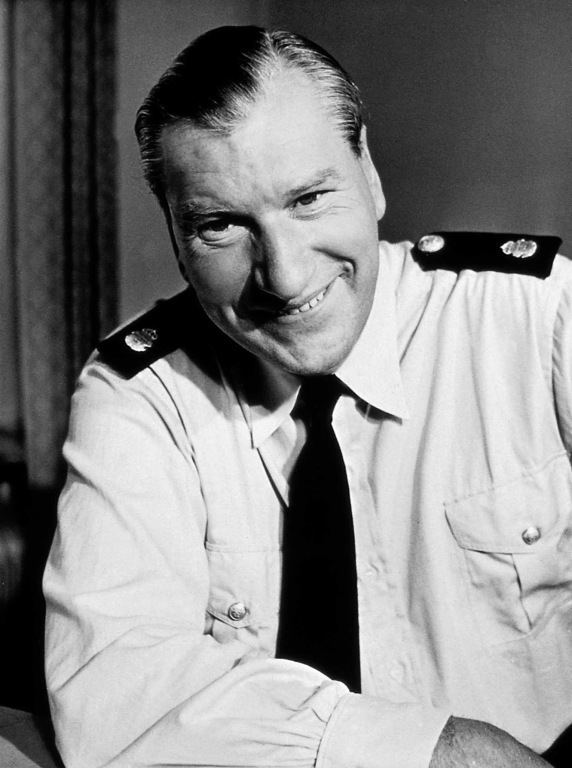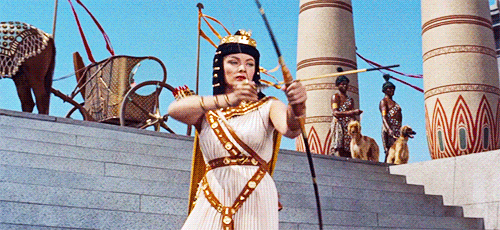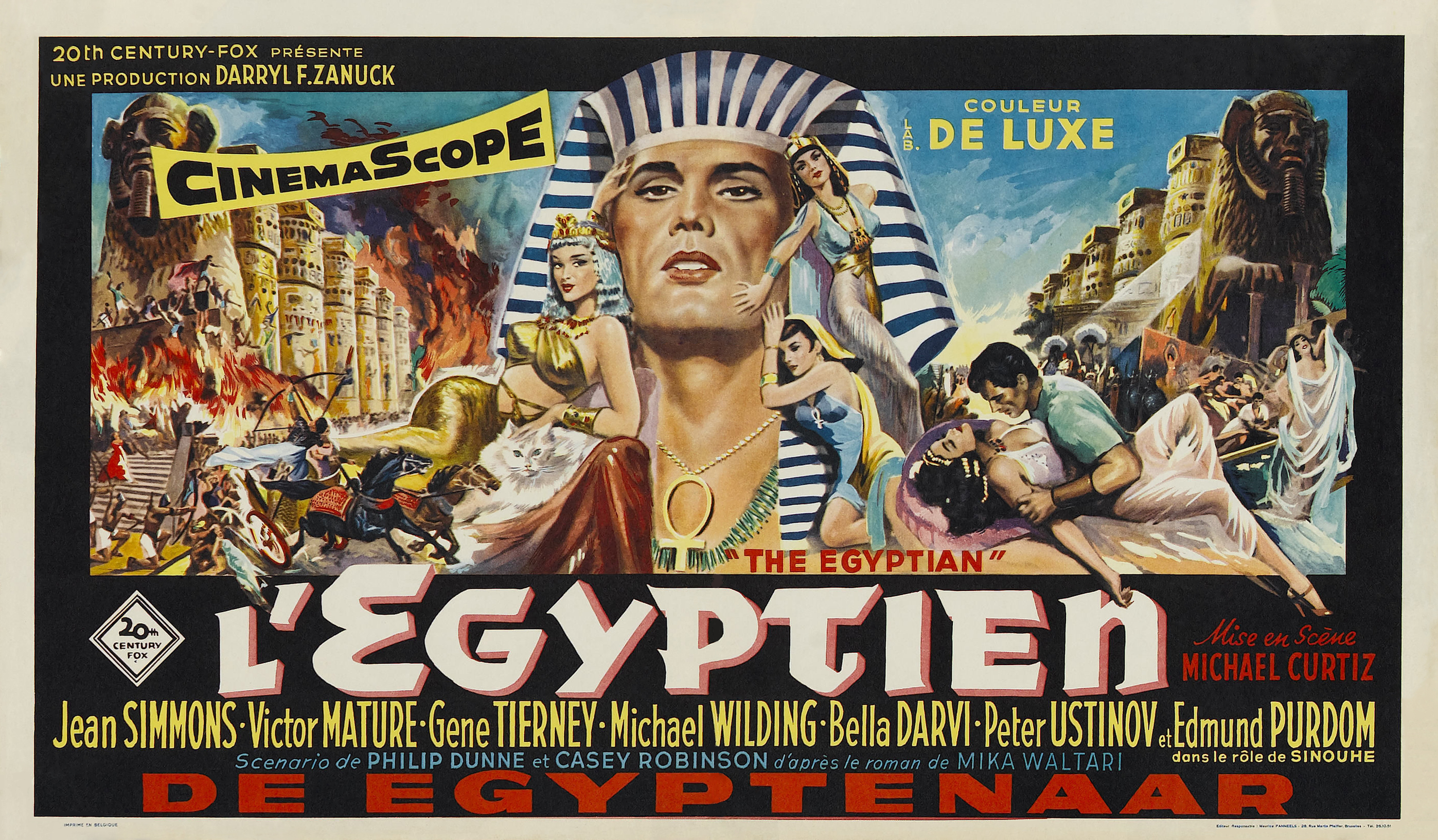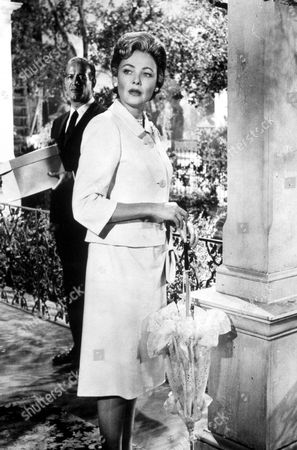Post by teleadm on Nov 20, 2020 10:40:05 GMT
The incredible beauty that was Gene Tierney might have left us in 1991 at the age 70, but her memory lingers on among many fans of 1940's and 1950's cinema. This year we celebrate the Brooklyn-born girl's 100 years since her birth.
With prominent cheekbones, luminous skin and the most crystalline green eyes of her day, Gene Tierney's striking good looks helped propel her to stardom.
Unfortunately she also started smoking to get a darker and deeper voice, since she thought her voice sounded like a squeaky Minnie Mouse.

On a family trip to the West Coast, she visited Warner Bros. studios, where a cousin worked as a producer of historical short films. Director Anatole Litvak, taken by the 17-year-old's beauty, told her that she should become an actress. Warner Bros. wanted to sign her to a contract, but her parents advised against it because of the relatively low salary; they also wanted her to take her position in society.
Her society debut occurred on September 24, 1938, when she was 17 years old. Soon bored with society life, she decided to pursue an acting career. Her father said, "If Gene is to be an actress, it should be in the legitimate theatre". She studied acting at a small Greenwich Village acting studio in New York with Yiddish and Broadway actor/director Benno Schneider. She became a protégée of Broadway producer-director George Abbott.
In her first role on Broadway, she carried a bucket of water across the stage in What a Life! 1938. A Variety magazine critic declared, "Miss Tierney is certainly the most beautiful water carrier I've ever seen!".
Her father set up a corporation, Belle-Tier, to fund and promote her acting career. Columbia Pictures signed her to a six-month contract in 1939. She met Howard Hughes, who tried unsuccessfully to seduce her. From a well-to-do family herself, she was not impressed by his wealth. Hughes eventually became a lifelong friend.
After a cameraman advised her to lose a little weight, she wrote to Harper's Bazaar magazine for a diet, which she followed for the next 25 years. She was initially offered the lead role in National Velvet, but production was delayed. When Columbia Pictures failed to find her a project, she returned to Broadway and starred as Patricia Stanley to critical and commercial success in The Male Animal 1940. In The New York Times, Brooks Atkinson wrote, "Tierney blazes with animation in the best performance she has yet given".
She was the toast of Broadway before her 20th birthday. The Male Animal was a hit, and she was featured in Life. She was also photographed by Harper's Bazaar, Vogue, and Collier's Weekly.

Two weeks after The Male Animal opened, Darryl F. Zanuck, the head of 20th Century Fox, was rumored to have been in the audience. During the performance, he told an assistant to note Tierney's name. Later that night, Zanuck dropped by the Stork Club, where he saw a young lady on the dance floor. He told his assistant, "Forget the girl from the play. See if you can sign that one." She was Tierney. At first, Zanuck did not think she was the actress he had seen. She was quoted (after the fact), saying: "I always had several different 'looks', a quality that proved useful in my career".

She signed with 20th Century-Fox and her motion picture debut was in a supporting role as Eleanor Stone in Fritz Lang's Western The Return of Frank James 1940, opposite Henry Fonda.
Thus started a successful movie career, with the usual ups and downs considering both the roles offered and her own personal health issues.

A very fictional story loosely based on the life of 19th-century American outlaw Belle Starr 1941. The real Belle Starr looked the absolute opposite of Tierney.

The Shanghai Gesture 1941, leading a cast that also included Walter Huston, Victor Mature, Ona Munson and Maria Ouspenskaya. Directed by Josef von Sternberg, It was the last Hollywood film Sternberg ever completed.

Screwball comedy and a "dual role" in Rings on Her Fingers 1942, co-starring Henry Fonda.

The object of Don Ameche's fascination in Ernest Lubitsch's comedy Heaven Can Wait 1943.

The mysterious Laura Hunt first seen only as a painted portrait in Laura 1944.

As the jealous, narcissistic femme fatale Ellen Berent Harland in Leave Her to Heaven 1945.
She earned an Academy Award nomination for Best Actress. This was 20th Century-Fox' most successful film of the 1940s. It was cited by director Martin Scorsese as one of his favorite films of all time, and he assessed Tierney as one of the most underrated actresses of the Golden Era.

Dragonwyck 1946, a gothic costume drama with murder and a possible master gone insane, co-starring Vincent Price and Walter Huston.

The Razor's Edge 1946, opposite Tyrone Power, an adaptation of W. Somerset Maugham's novel of the same name. Her performance was critically praised.

The Ghost and Mrs Muir 1947, a romantic fantasy co-starring Rex Harrison.
Variety wrote “Gene Tierney gives what undoubtedly is her best performance to date. It’s warmly human... the out-of-this-world romance pulls audience sympathy with an infectious tug that never slackens. In his role as the lusty, seafaring shade, Rex Harrison commands the strongest attention...Philip Dunne’s script lards the R. A. Dick novel with gusty humor and situations that belie the ghostly theme. Dialog makes full use of salty expressions to point up chuckles"

That Wonderful Urge 1948, a commercially successful screwball comedy co-starring Tyrone Power.

Whirlpool 1950, a noir thriller co-starring Richard Conte and José Ferrer, directed by Otto Preminger.

Night and the City 1950 publicity pic with co-stars Richard Widmark and Hugh Marlowe. A noir drama shot in London, about an ambitious hustler who meets continuous failures. Directed by Jules Dassin.

Where the Sidewalks Ends 1950, a noir movie once again directed by Otto. The film displays a brand of violence, "lurking below urban society".

She was lent to Paramount Pictures, giving a comic turn as Maggie Carleton in Mitchell Leisen's ensemble farce, The Mating Season 1951, with John Lund, Thelma Ritter, and Miriam Hopkins.

With Way of a Gaucho 1952 her old contract at 20th Century-Fox expired.
In the course of the 1940s, she reached a pinnacle of fame as a beautiful leading lady, on a par with "fellow sirens Rita Hayworth, Lana Turner and Ava Gardner". She was "called the most beautiful woman in movie history" and many of her movies in the 1940's became classic films.
With difficult events in her personal life, she struggled for years with episodes of manic depression. In 1943, she gave birth to a daughter, Daria, who was deaf and mentally disabled, the result of a fan breaking a rubella quarantine and infecting the pregnant Tierney while she volunteered at the Hollywood Canteen.

In 1953, she suffered problems with concentration, which affected her film appearances. She dropped out of Mogambo and was replaced by Grace Kelly. While playing Anne Scott in The Left Hand of God 1955 (pic above), opposite Humphrey Bogart, she became ill. Bogart's sister Frances (known as Pat) had suffered from mental illness, so he showed her great sympathy, feeding her lines during the production and encouraging her to seek help.
In late December 1957, she, from her mother's apartment in Manhattan, stepped onto a ledge 14 stories above ground and remained for about 20 minutes in what was considered a suicide attempt. Police were called, and afterwards, her family arranged for her to be admitted to the Menninger Clinic in Topeka, Kansas. The following year, after treatment for depression, she was discharged. Afterwards, she worked as a sales girl in a local dress shop with hopes of integrating back into society, but she was recognized by a customer, resulting in sensational newspaper headlines.

She made a screen comeback in Advise and Consent 1962, co-starring with Walter Pidgeon among many other, and reuniting with director Otto Preminger.

Toys in the Attic 1963, based on a play by Lillian Hellman, seen here with co-star Dean Martin.

The Pleasure Seekers 1964, a variation of the Three Coins in the Fountain story, but set in Madrid. Co-starring with a younger generation of actors such as Ann-Margret, Anthony Franciosa, and Carol Lynley.
The movie was made by 20th Century Fox, and there is a story that someone at Fox had found out that Tierney owned them one more movie and forced her to appear in this one.
Her career as a solid character actress seemed to be back on track, but then she suddenly retired.
Except for...

Daughter of the Mind 1969 a made-for-television horror-thriller co-starring Don Murray and Ray Milland.
She also appeared in the first episode of the TV mini-series Scruples 1980.
The above examples are not her complete filmography.

First published in 1979.

Thanks for watching!
Opinions of all kinds are welcome!
With prominent cheekbones, luminous skin and the most crystalline green eyes of her day, Gene Tierney's striking good looks helped propel her to stardom.
Unfortunately she also started smoking to get a darker and deeper voice, since she thought her voice sounded like a squeaky Minnie Mouse.

On a family trip to the West Coast, she visited Warner Bros. studios, where a cousin worked as a producer of historical short films. Director Anatole Litvak, taken by the 17-year-old's beauty, told her that she should become an actress. Warner Bros. wanted to sign her to a contract, but her parents advised against it because of the relatively low salary; they also wanted her to take her position in society.
Her society debut occurred on September 24, 1938, when she was 17 years old. Soon bored with society life, she decided to pursue an acting career. Her father said, "If Gene is to be an actress, it should be in the legitimate theatre". She studied acting at a small Greenwich Village acting studio in New York with Yiddish and Broadway actor/director Benno Schneider. She became a protégée of Broadway producer-director George Abbott.
In her first role on Broadway, she carried a bucket of water across the stage in What a Life! 1938. A Variety magazine critic declared, "Miss Tierney is certainly the most beautiful water carrier I've ever seen!".
Her father set up a corporation, Belle-Tier, to fund and promote her acting career. Columbia Pictures signed her to a six-month contract in 1939. She met Howard Hughes, who tried unsuccessfully to seduce her. From a well-to-do family herself, she was not impressed by his wealth. Hughes eventually became a lifelong friend.
After a cameraman advised her to lose a little weight, she wrote to Harper's Bazaar magazine for a diet, which she followed for the next 25 years. She was initially offered the lead role in National Velvet, but production was delayed. When Columbia Pictures failed to find her a project, she returned to Broadway and starred as Patricia Stanley to critical and commercial success in The Male Animal 1940. In The New York Times, Brooks Atkinson wrote, "Tierney blazes with animation in the best performance she has yet given".
She was the toast of Broadway before her 20th birthday. The Male Animal was a hit, and she was featured in Life. She was also photographed by Harper's Bazaar, Vogue, and Collier's Weekly.

Two weeks after The Male Animal opened, Darryl F. Zanuck, the head of 20th Century Fox, was rumored to have been in the audience. During the performance, he told an assistant to note Tierney's name. Later that night, Zanuck dropped by the Stork Club, where he saw a young lady on the dance floor. He told his assistant, "Forget the girl from the play. See if you can sign that one." She was Tierney. At first, Zanuck did not think she was the actress he had seen. She was quoted (after the fact), saying: "I always had several different 'looks', a quality that proved useful in my career".

She signed with 20th Century-Fox and her motion picture debut was in a supporting role as Eleanor Stone in Fritz Lang's Western The Return of Frank James 1940, opposite Henry Fonda.
Thus started a successful movie career, with the usual ups and downs considering both the roles offered and her own personal health issues.

A very fictional story loosely based on the life of 19th-century American outlaw Belle Starr 1941. The real Belle Starr looked the absolute opposite of Tierney.

The Shanghai Gesture 1941, leading a cast that also included Walter Huston, Victor Mature, Ona Munson and Maria Ouspenskaya. Directed by Josef von Sternberg, It was the last Hollywood film Sternberg ever completed.

Screwball comedy and a "dual role" in Rings on Her Fingers 1942, co-starring Henry Fonda.

The object of Don Ameche's fascination in Ernest Lubitsch's comedy Heaven Can Wait 1943.

The mysterious Laura Hunt first seen only as a painted portrait in Laura 1944.

As the jealous, narcissistic femme fatale Ellen Berent Harland in Leave Her to Heaven 1945.
She earned an Academy Award nomination for Best Actress. This was 20th Century-Fox' most successful film of the 1940s. It was cited by director Martin Scorsese as one of his favorite films of all time, and he assessed Tierney as one of the most underrated actresses of the Golden Era.

Dragonwyck 1946, a gothic costume drama with murder and a possible master gone insane, co-starring Vincent Price and Walter Huston.

The Razor's Edge 1946, opposite Tyrone Power, an adaptation of W. Somerset Maugham's novel of the same name. Her performance was critically praised.

The Ghost and Mrs Muir 1947, a romantic fantasy co-starring Rex Harrison.
Variety wrote “Gene Tierney gives what undoubtedly is her best performance to date. It’s warmly human... the out-of-this-world romance pulls audience sympathy with an infectious tug that never slackens. In his role as the lusty, seafaring shade, Rex Harrison commands the strongest attention...Philip Dunne’s script lards the R. A. Dick novel with gusty humor and situations that belie the ghostly theme. Dialog makes full use of salty expressions to point up chuckles"

That Wonderful Urge 1948, a commercially successful screwball comedy co-starring Tyrone Power.

Whirlpool 1950, a noir thriller co-starring Richard Conte and José Ferrer, directed by Otto Preminger.

Night and the City 1950 publicity pic with co-stars Richard Widmark and Hugh Marlowe. A noir drama shot in London, about an ambitious hustler who meets continuous failures. Directed by Jules Dassin.

Where the Sidewalks Ends 1950, a noir movie once again directed by Otto. The film displays a brand of violence, "lurking below urban society".

She was lent to Paramount Pictures, giving a comic turn as Maggie Carleton in Mitchell Leisen's ensemble farce, The Mating Season 1951, with John Lund, Thelma Ritter, and Miriam Hopkins.

With Way of a Gaucho 1952 her old contract at 20th Century-Fox expired.
In the course of the 1940s, she reached a pinnacle of fame as a beautiful leading lady, on a par with "fellow sirens Rita Hayworth, Lana Turner and Ava Gardner". She was "called the most beautiful woman in movie history" and many of her movies in the 1940's became classic films.
With difficult events in her personal life, she struggled for years with episodes of manic depression. In 1943, she gave birth to a daughter, Daria, who was deaf and mentally disabled, the result of a fan breaking a rubella quarantine and infecting the pregnant Tierney while she volunteered at the Hollywood Canteen.

In 1953, she suffered problems with concentration, which affected her film appearances. She dropped out of Mogambo and was replaced by Grace Kelly. While playing Anne Scott in The Left Hand of God 1955 (pic above), opposite Humphrey Bogart, she became ill. Bogart's sister Frances (known as Pat) had suffered from mental illness, so he showed her great sympathy, feeding her lines during the production and encouraging her to seek help.
In late December 1957, she, from her mother's apartment in Manhattan, stepped onto a ledge 14 stories above ground and remained for about 20 minutes in what was considered a suicide attempt. Police were called, and afterwards, her family arranged for her to be admitted to the Menninger Clinic in Topeka, Kansas. The following year, after treatment for depression, she was discharged. Afterwards, she worked as a sales girl in a local dress shop with hopes of integrating back into society, but she was recognized by a customer, resulting in sensational newspaper headlines.

She made a screen comeback in Advise and Consent 1962, co-starring with Walter Pidgeon among many other, and reuniting with director Otto Preminger.

Toys in the Attic 1963, based on a play by Lillian Hellman, seen here with co-star Dean Martin.

The Pleasure Seekers 1964, a variation of the Three Coins in the Fountain story, but set in Madrid. Co-starring with a younger generation of actors such as Ann-Margret, Anthony Franciosa, and Carol Lynley.
The movie was made by 20th Century Fox, and there is a story that someone at Fox had found out that Tierney owned them one more movie and forced her to appear in this one.
Her career as a solid character actress seemed to be back on track, but then she suddenly retired.
Except for...

Daughter of the Mind 1969 a made-for-television horror-thriller co-starring Don Murray and Ray Milland.
She also appeared in the first episode of the TV mini-series Scruples 1980.
The above examples are not her complete filmography.

First published in 1979.

Thanks for watching!
Opinions of all kinds are welcome!




















